Abstract
To identify clinical disorders associated with severe illness in African children with diarrhoea, we studied a group of under-5-year-olds with diarrhoea who had been brought to a large public hospital in central Cote d'Ivoire. The general condition of children with diarrhoea was assessed and classified according to criteria recommended by WHO, and then used as a nonspecific indicator of severity. Of the 264 children with diarrhoea who were enrolled in the study, 196 had nonsevere illness and 68 severe illness. Children with severe illness were significantly more likely than those with nonsevere illness to be dehydrated (45% versus 11%), moderate-to-severely wasted (47% versus 29%), bacteraemic (26% versus 9%), severely anaemic (haemoglobin level <6 g/dl; 15% versus 6%), have Plasmodium falciparum parasitaemia (27% versus 14%), and have two or more of these five conditions (60% versus 14%). Nontyphoidal Salmonella spp. were present in 68% of the blood isolates but were not associated with seropositivity to human immunodeficiency virus (HIV). The study demonstrates the need for a more comprehensive approach to assessment and management of children with diarrhoea that ensures prompt recognition of bacteraemia, anaemia, wasting and malaria, as well as dehydration. Simple nonspecific observational criteria, such as those recommended by WHO for assessing and classifying general condition, are useful for identifying children with diarrhoea who are at high risk of having life-threatening clinical disorders, and can readily be used by health workers whose clinical training and access to diagnostic laboratory facilities are both limited.
Full text
PDF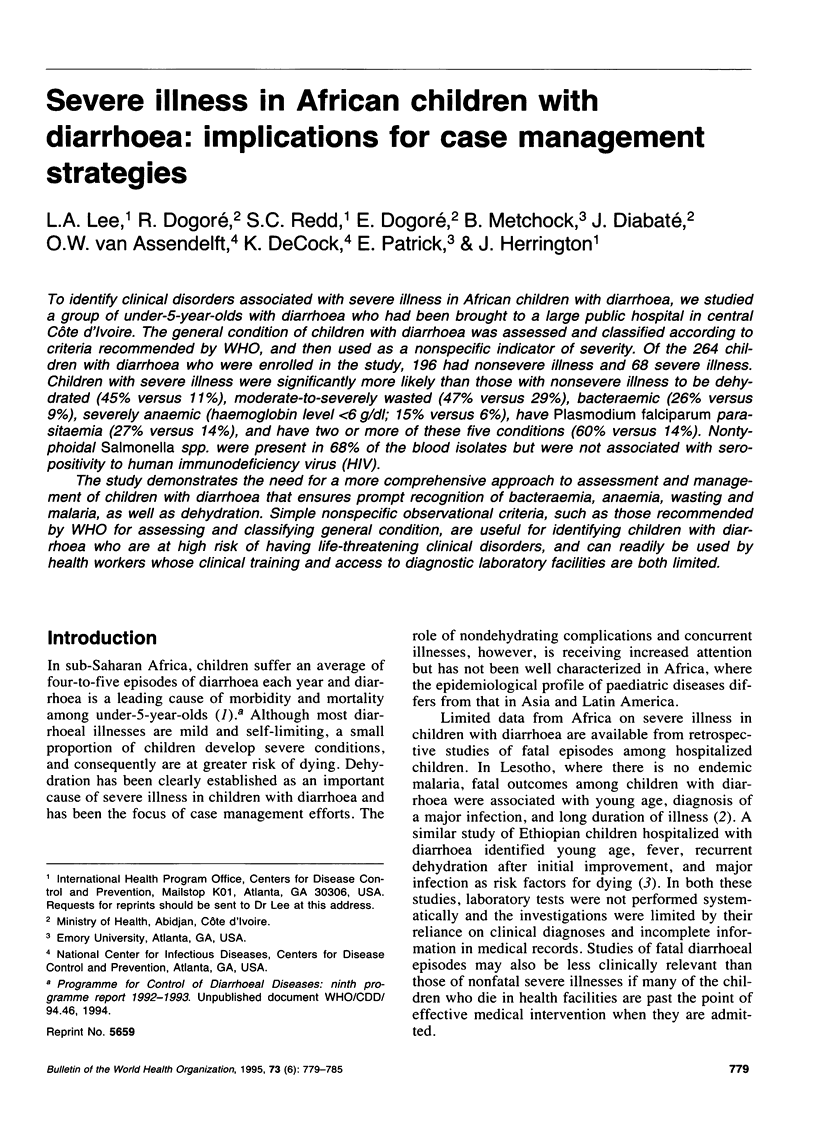
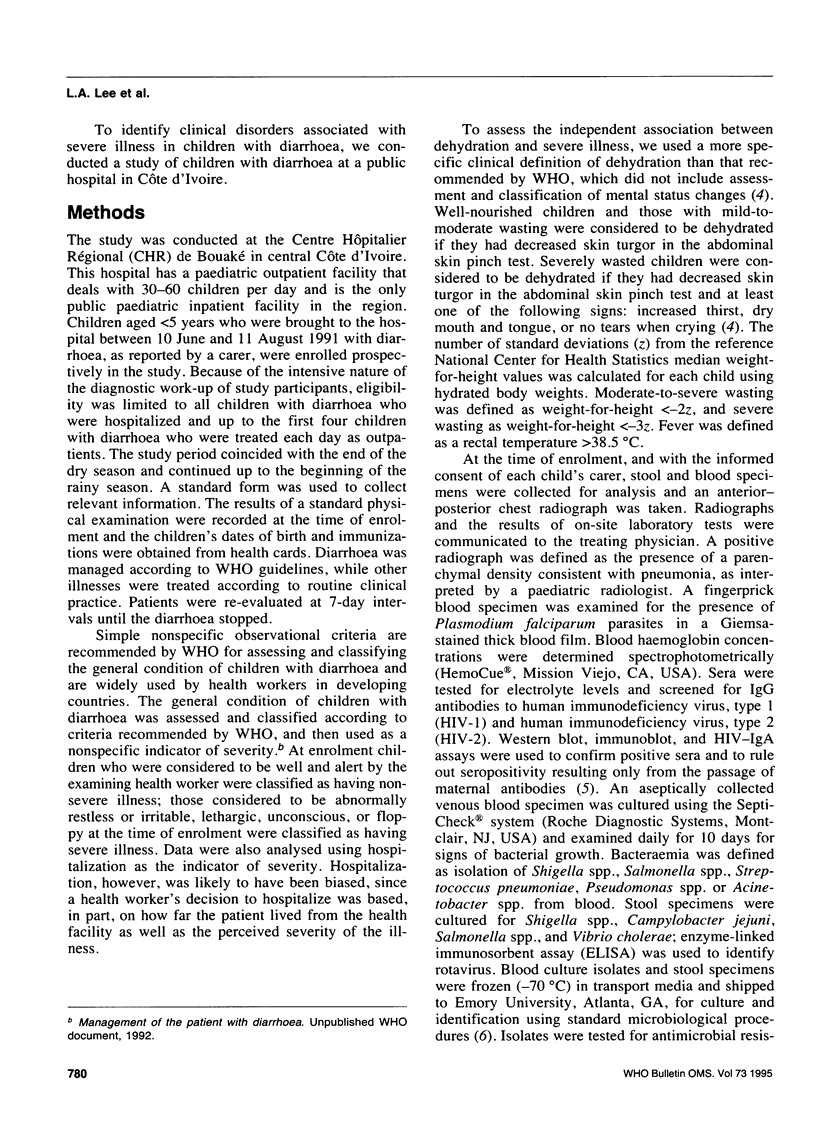
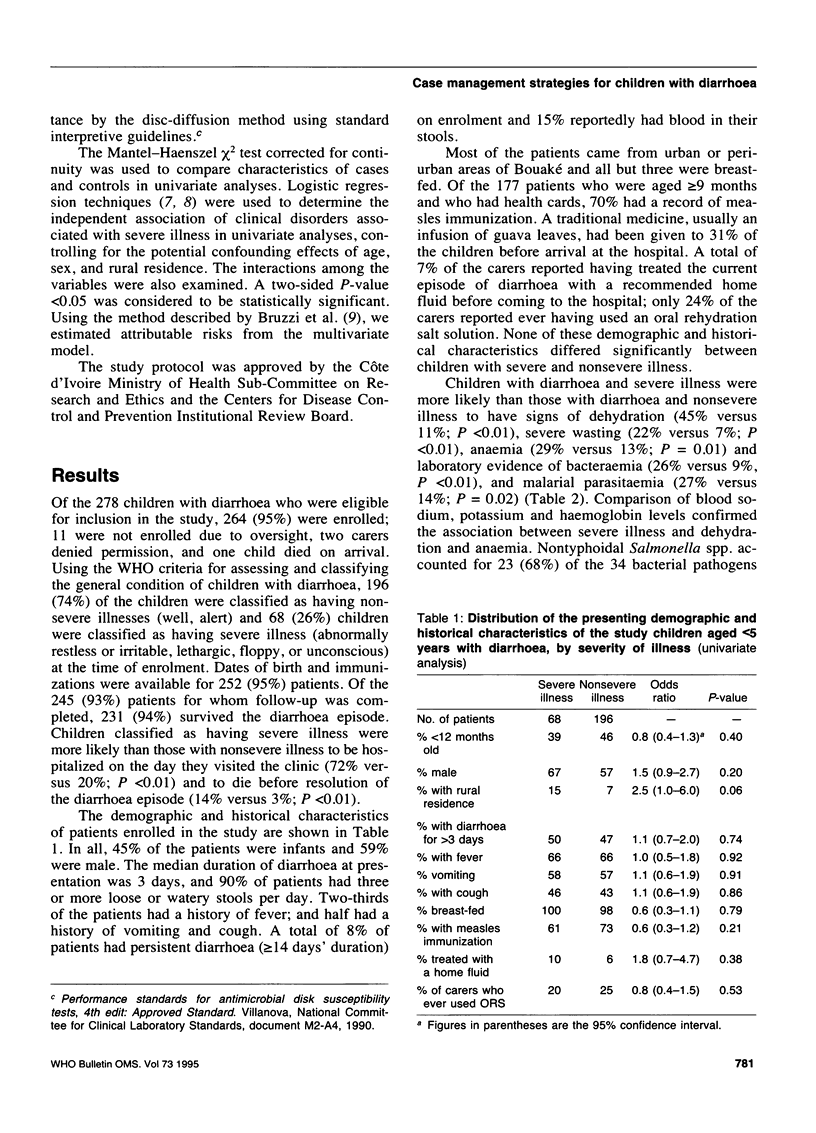
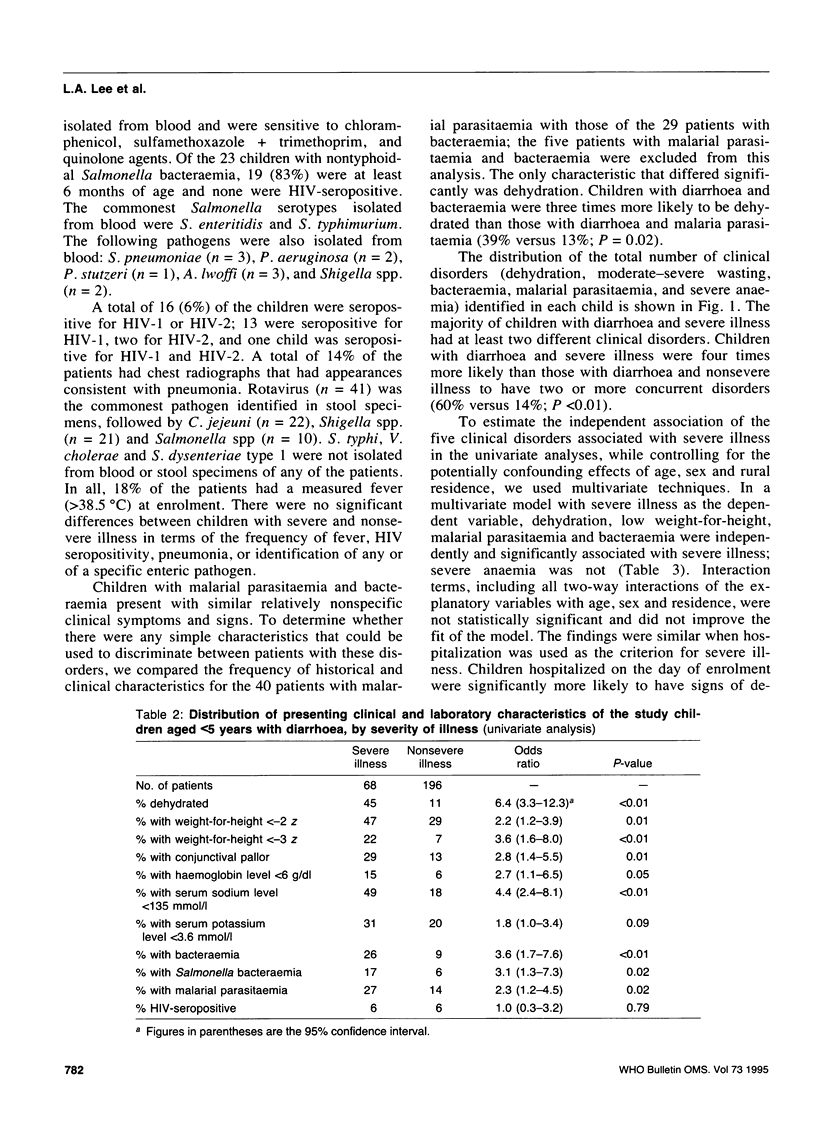
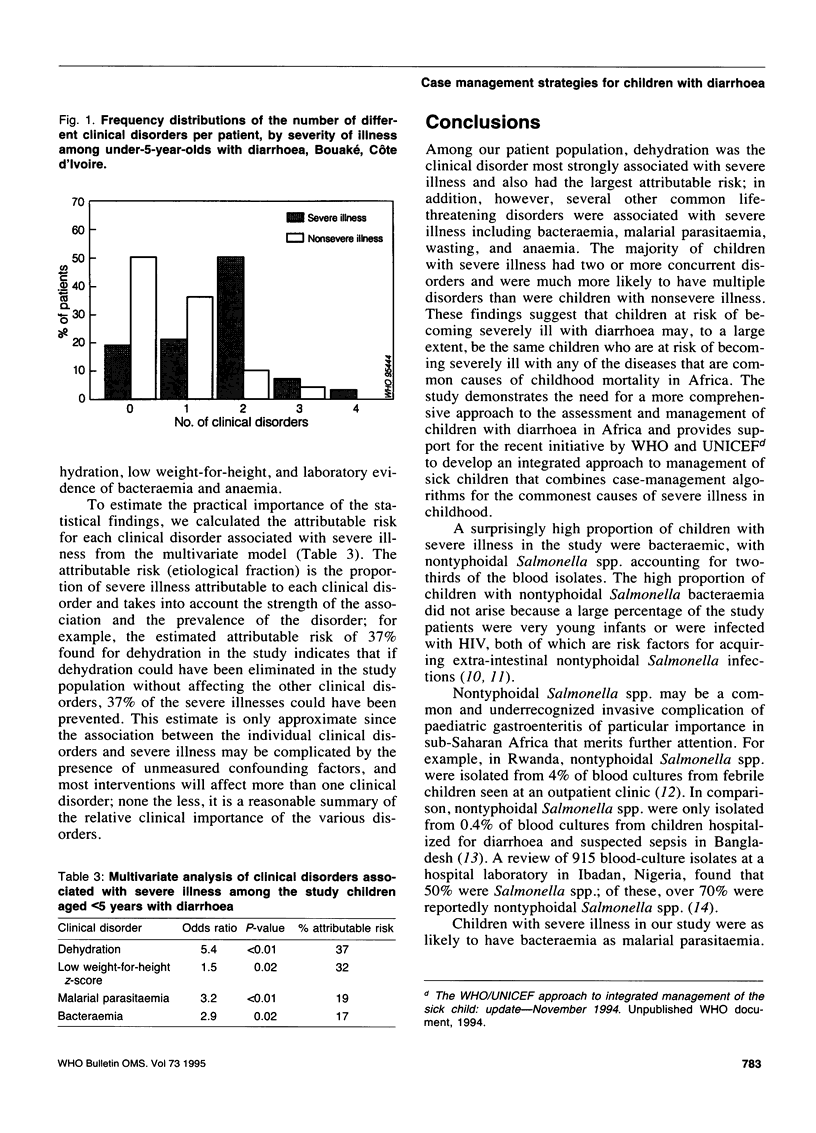
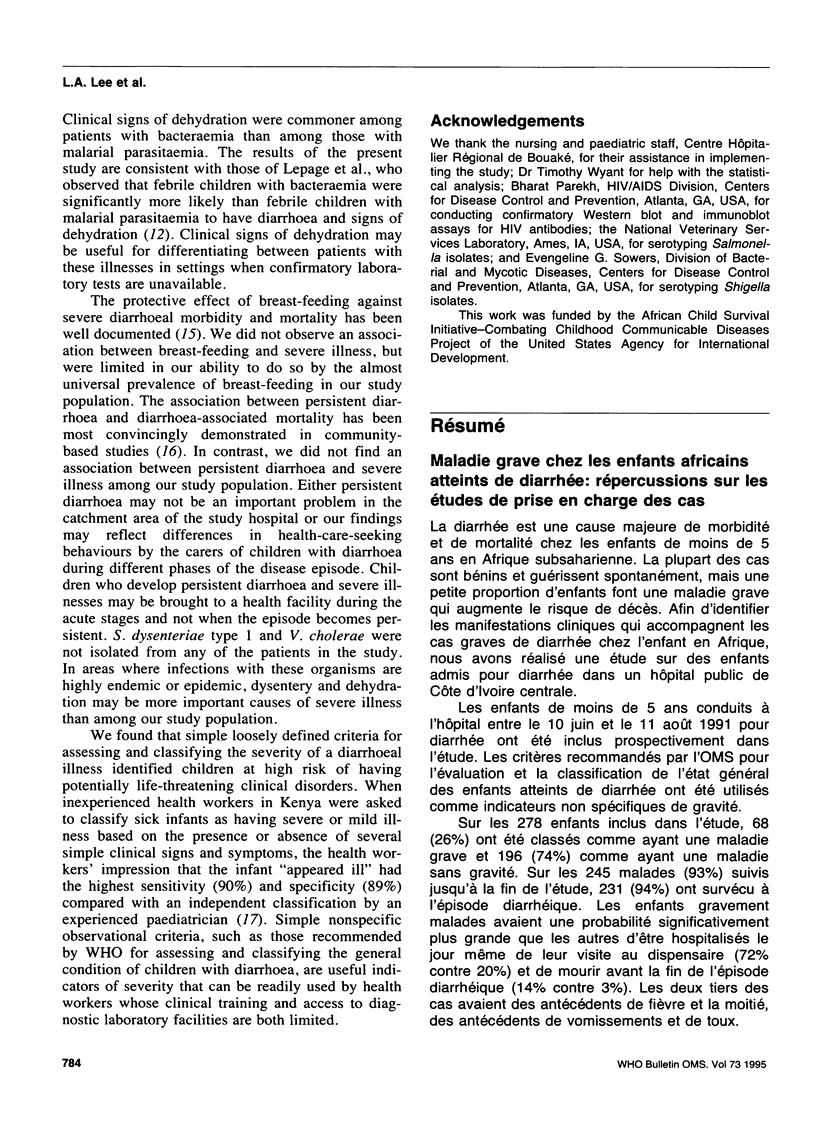
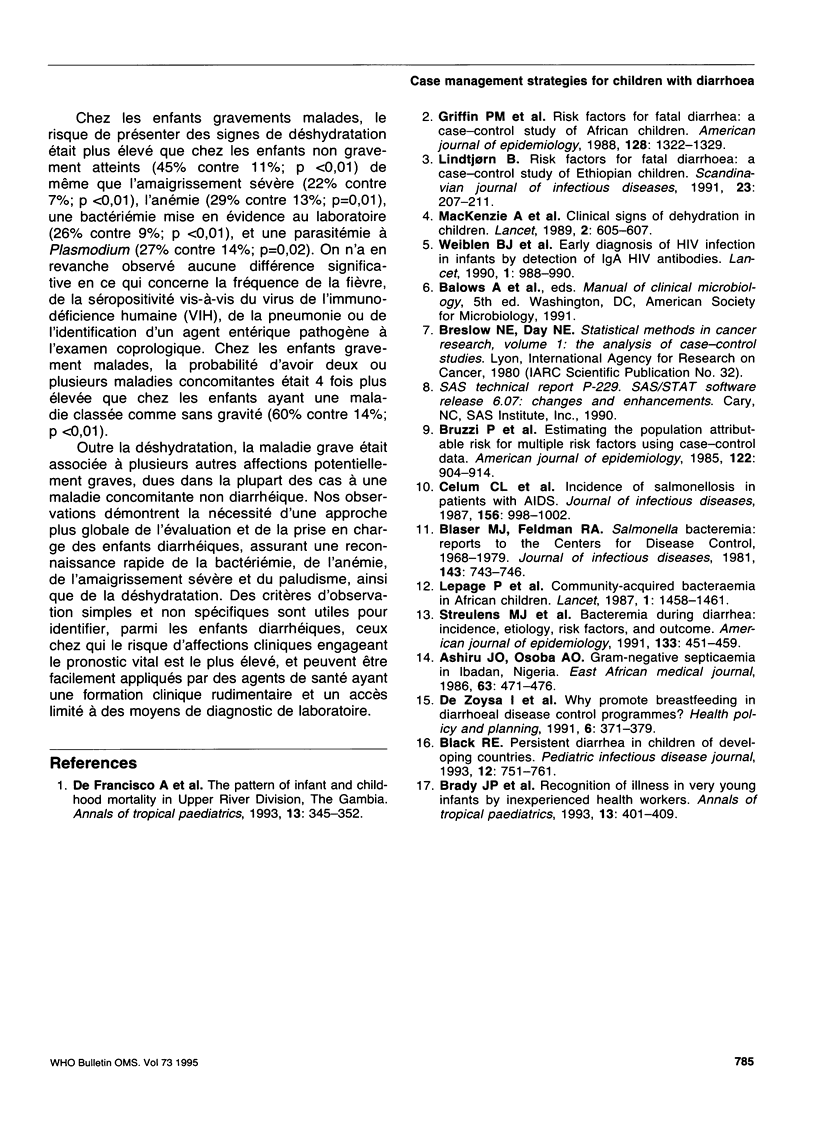
Selected References
These references are in PubMed. This may not be the complete list of references from this article.
- Ashiru J. O., Osoba A. O. Gram negative septicaemia in Ibadan, Nigeria. East Afr Med J. 1986 Jul;63(7):471–476. [PubMed] [Google Scholar]
- Blaser M. J., Feldman R. A. From the centers for disease control. Salmonella bacteremia: reports to the Centers for Disease Control, 1968-1979. J Infect Dis. 1981 May;143(5):743–746. doi: 10.1093/infdis/143.5.743. [DOI] [PubMed] [Google Scholar]
- Brady J. P., Awan F. B., Wafula E. M., Onyango F. E. Recognition of illness in very young infants by inexperienced health workers. Ann Trop Paediatr. 1993;13(4):401–407. doi: 10.1080/02724936.1993.11747680. [DOI] [PubMed] [Google Scholar]
- Bruzzi P., Green S. B., Byar D. P., Brinton L. A., Schairer C. Estimating the population attributable risk for multiple risk factors using case-control data. Am J Epidemiol. 1985 Nov;122(5):904–914. doi: 10.1093/oxfordjournals.aje.a114174. [DOI] [PubMed] [Google Scholar]
- Celum C. L., Chaisson R. E., Rutherford G. W., Barnhart J. L., Echenberg D. F. Incidence of salmonellosis in patients with AIDS. J Infect Dis. 1987 Dec;156(6):998–1002. doi: 10.1093/infdis/156.6.998. [DOI] [PubMed] [Google Scholar]
- De Francisco A., Hall A. J., Schellenberg J. R., Greenwood A. M., Greenwood B. M. The pattern of infant and childhood mortality in Upper River Division, The Gambia. Ann Trop Paediatr. 1993;13(4):345–352. doi: 10.1080/02724936.1993.11747669. [DOI] [PubMed] [Google Scholar]
- Mackenzie A., Barnes G., Shann F. Clinical signs of dehydration in children. Lancet. 1989 Sep 9;2(8663):605–607. doi: 10.1016/s0140-6736(89)90723-x. [DOI] [PubMed] [Google Scholar]
- Weiblen B. J., Lee F. K., Cooper E. R., Landesman S. H., McIntosh K., Harris J. A., Nesheim S., Mendez H., Pelton S. I., Nahmias A. J. Early diagnosis of HIV infection in infants by detection of IgA HIV antibodies. Lancet. 1990 Apr 28;335(8696):988–990. doi: 10.1016/0140-6736(90)91061-e. [DOI] [PubMed] [Google Scholar]


